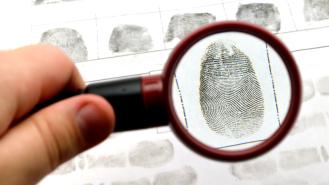
The hidden electrical noise that can catch criminals
How can a seemingly insignificant electrical hum be crucial in solving the most serious of crimes? We explore the world of Electric Network Frequency (ENF) analysis to explain this fascinating forensic technique.
A day in court
In 2012, three men found themselves in court on charges of supplying firearms to gangs in South London, following the discovery of a large cache of weapons.
Christopher McKenzie, 26, along with Hume Bent and Carlo Moncrieffe, both 47, were arrested after police found six firearms, 47 rounds of ammunition, 100 shell casings and ammunition-making tools at Moncrieffe's residence in Lewisham.
Law enforcement spent several months collecting intelligence and evidence on the suspects, including an audio recording of the men taking part in what was alleged to have been an arms deal.
In court, the trio’s lawyers argued that the police had manipulated this recording by editing multiple clips together to strengthen their case. Dr Alan Cooper, a senior digital forensic practitioner at the Met Police and an expert in ENF analysis, was called as a witness.
What is ENF analysis?
Over the past 20 years, audio experts at the Met Police's forensic lab in South London have been recording the hum of mains electricity. While typically inaudible, it becomes a distinct, metallic buzz when amplified.
Any digital recordings made near an electrical source pick up this hum and embed it into the audio, whether it’s a power socket, light fixture or pylon. For sound engineers, this can be a nuisance. But for forensic scientists, it can be invaluable in solving crimes.
Though the mains frequency in the UK is typically 50Hz, it fluctuates slightly over time due to changes in supply and demand. If millions of people turn their kettles on the minute a popular television show has finished, for example, the increase in demand can cause the frequency to dip. Conversely, when generation exceeds demand, the frequency rises.
The initial spark for ENF
In the 2000s, audio expert Dr Catalin Grigoras discovered that the pattern of these fluctuations in frequency is unique over time. While this might have seemed like nothing more than just an interesting electrical quirk, it turned out to have profound implications for forensic science.
Since most digital recordings capture this faint humming sound, comparing the pattern in an audio recording with a database that logs these fluctuations can create a digital timestamp. This can reveal exactly when a recording was made.
Known as Electric Network Frequency analysis, this technique allows forensic experts to detect if an audio recording has been edited or manipulated.
In the UK, where there is a single national grid, frequency fluctuations are consistent nationwide. This allows forensic experts to authenticate recordings regardless of where in the country they have been made.
In regions with multiple grids, the process can be more complex, but it remains feasible to match a recording to the correct grid by maintaining a continuous log of this frequency data.
A victory for ENF
Back in court, forensic analysis, including ENF, found consistent signals within the audio recording that matched the dates and times of the alleged arms deal. This proved crucial, as it demonstrated that the recordings had not been tampered with. It led to the conviction of three men, who were given a combined sentence of 33 years for firearms-related offences.
The Metropolitan Police were the first to automate the ENF analysis system, but the technique is gaining traction among law enforcement agencies worldwide.
The future of ENF
ENF analysis has been described as the most significant development in audio forensics since Watergate, with recent research even expanding it to visual recordings.
Indoor lighting, such as fluorescent and incandescent bulbs, can reflect changes in voltage supply frequency and impact light intensity. This suggests that, similar to audio recordings, visual recordings can also contain ENF.
Researchers also found that the ENF signatures from audio and visual tracks of the same video should align, indicating that the components were recorded together. This matching enables forensic experts to determine if audio and visual tracks were captured simultaneously or later manipulated.
These developments indicate that ENF analysis can play a pivotal role in verifying the authenticity of both audio and visual recordings, offering a powerful tool in the ongoing battle against crime.








